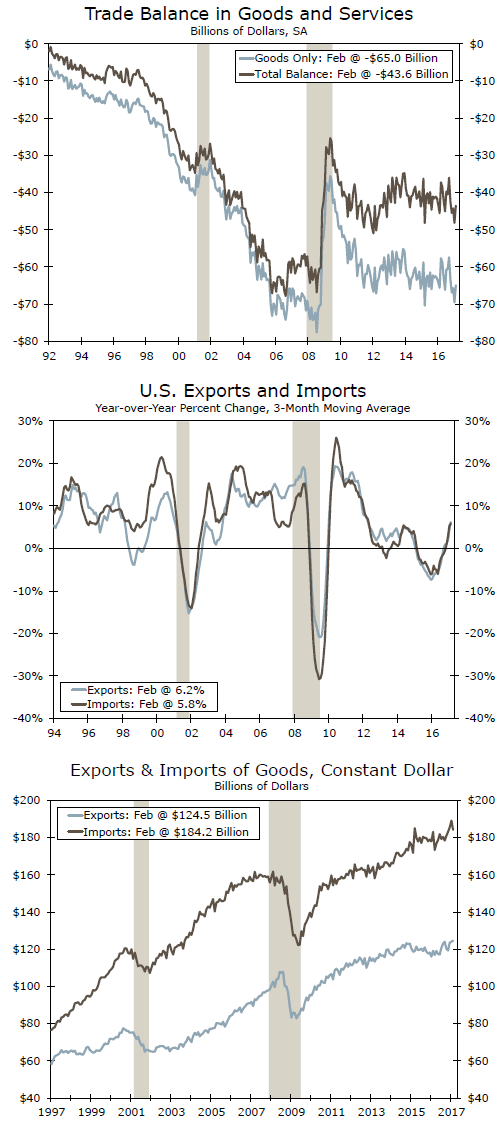A large $4.3 billion decrease in the imports of goods, coupled with a small $0.4 billion increase in exports, were the reasons for the narrowing of the deficit in February.
Lower Automotive and Consumer Goods Imports Helped Trade
A large drop in the importation of automotive and consumer goods products was the culprit of the decline in imports of goods in February. Automotive imports declined $2.6 billion and consumer goods imports dropped $3.1 billion after an increase of $0.9 billion and $2.4 billion in January, respectively. Overall, imports of goods and services declined 1.8 percent in February after an increase of 2.3 percent in January. But what is more important for U.S. GDP growth during the first quarter of the year is that real imports of goods declined by a larger 2.6 percent during the month after increasing 2.0 percent in January.
Meanwhile, exports of goods and services increased 0.2 percent during the second month of the year after increasing 0.8 percent in January. In real terms, exports of goods increased 0.3 percent after increasing 0.4 percent in January.
February Deficit Consistent with Weak Q1 Consumer Demand
The improvement in the February trade deficit is consistent with the softness we have seen in U.S. consumer demand. Furthermore, yesterday’s release of a very weak Wards automobile sales report for March could put further downward pressure on the deficit if this weakness extends into the third month of the quarter.
Lower imports of automotive and consumer goods in February helped to bring down the trade deficit in February. They also help in improving the prospects of a lessened negative effect from the trade deficit on real GDP growth during the first quarter of the year. However, the lower deficit cannot hide the fact that U.S. consumer demand has remained very weak during the first two months of 2017 after a very strong performance by the consumer during the last quarter of 2016.
Strong Decline in the Trade Deficit Versus Asia and Europe
Another salient characteristic of February’s trade deficit was a large drop in the trade deficit with the Pacific Rim countries, specifically with China, and a smaller decline in the deficit versus Europe. The trade deficit with the Pacific Rim countries declined to $26.8 billion in February from $38.6 billion in January. The bulk of the decline came from China, with the deficit coming down to $23 billion in February from $31.3 billion in January.
Meanwhile, the trade deficit with Europe declined from $13.9 billion in January to $10.7 billion in February. At the same time, the deficit with Mexico increased from $3.9 billion in January to $5.8 billion in February while the deficit with Canada declined from $3.4 billion in January to $2.1 billion in February.















